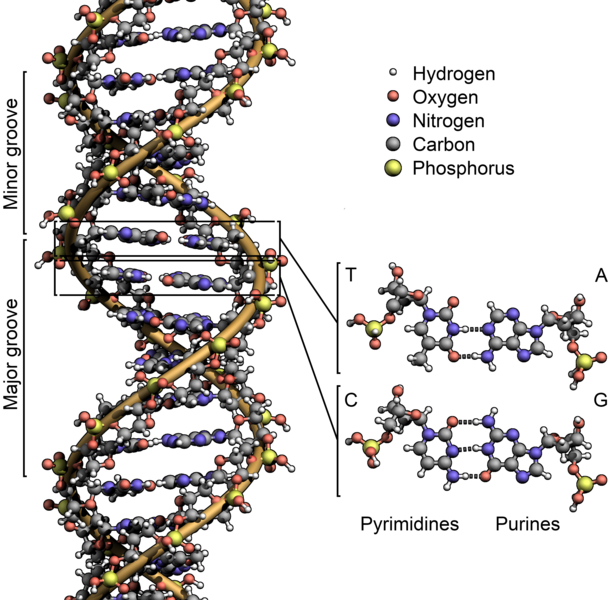DNA molecules are able to distinguish between opposite directions of spin

The principles of quantum theory determine the behavior of the microscopic particles of matter: atoms, small molecules and subatomic particles. But do they also manifest in biological systems? Prof. Ron Naaman from the Department of Chemical Physics in the Faculty of Chemistry of the Weizmann Institute of Science, together with Prof. Zeev Weger and research student Tal Marcus and scientists from Germany, examined this question. The results of their research show that molecules of the genetic material, DNA, are able to distinguish between different directions of spin, which is a kind of spin attack that characterizes atoms or subatomic material particles. These findings were recently published in the scientific journal Science.
To study quantum phenomena in tiny matter particles, scientists usually cool them to temperatures close to absolute zero. Prof. Naaman: "But when such a system grows beyond a certain threshold, or the temperature of the material rises beyond a certain point, it is difficult to discover its quantum properties, and the classical physics of the day takes over. Biological molecules such as DNA are very large, and they operate at temperatures much higher than those at which we perform most experiments in the field of quantum physics. One could expect that spin, a quantum phenomenon that exists in two opposite states (commonly called "up" and "down"), is not clearly expressed in these molecules, and therefore it would be difficult to assume that it has any effect on their function."
But the biological molecules have another property: chirality. This property is expressed in the existence of molecules with the same chemical composition, which differ from each other in their spatial structure, so that one molecule is a kind of "mirror image" of the other molecule (this reminds us of the similarity and difference that exists between the palm of the right hand and the palm of the left hand). Therefore, despite the chemical identity between them, it is impossible to place these molecules so that they overlap each other (just as it is impossible to place the palm of the right hand with the palm of the left hand).
In their previous studies, the institute's scientists learned that some chiral molecules are able to have different interactions with different spin directions. Together with Prof. Helmut Zacharias and his research team at the University of Münster in Germany, they tested whether DNA, which is a chiral biological molecule, can also distinguish between different spin states.
The scientists created ordered layers of double-stranded DNA one molecule thick, which were independently organized and attached to a gold surface. Next, they exposed the DNA to groups of electrons that were characterized by the two spin states. This is how they noticed that the DNA molecules create prominent interactions with electrons that were characterized by one particular spin direction, and ignore the rest. The longer the molecule was, the more effective it was in selecting the electrons with the desired spin. This finding is particularly interesting in view of the fact that single strands and disordered layers of the molecules did not act this way. The scientists believe that the ability to choose electrons with a specific spin is due to the chiral shape of the DNA molecule.
"Actually," says Prof. Naaman, "it seems that DNA is an excellent 'spin filter'. Our research shows that DNA is only damaged by spins in one direction. It is possible that in the future we will be able to reduce the rate of damage to biological systems from electromagnetic radiation and design medical devices accordingly. On the other hand, in the future it may be that DNA and other biological molecules will become central components in spintronic devices, which will work by detecting the spin direction instead of by measuring electric charge, like the electronic devices that exist today."

5 תגובות
It is amazing that DNA is designed to distinguish the spin of particles, and I am convinced that it will also have uses, but what matters is that science is rushing forward. It's not a bad experiment, and teaches a lot.
I'm convinced that when they invented the electron gun they said the same thing before television came along.
To see why you are so surprised at every question that is solved, at least a hundred more are created in the best case.
And the answer is found in the body of the article "On the other hand, in the future it may be that DNA and other biological molecules will become central components in spintronic devices, which will work by detecting the spin direction instead of by measuring electric charge, like the electronic devices that exist today."
It is very expensive to cool to absolute 0 when DNA does it at body temperature
Much cheaper
After they have already cracked the human genome, it is surprising how much medicine and science do not advance. I would love to know what practical uses this discovery has for which the distinguished professors are honored.
Sounds like one big spin to me